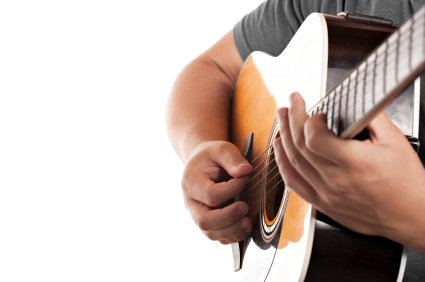How are Guitars Made?

Photo by iStockphoto.com
A widely popular and played instrument, the guitar belongs to a group of
instruments called chordophones. Music is produced when the musician plucks a
series of strings that run vertically along the instrument.
Strings are plucked with one hand, and the other hand is used to finger frets,
or metal strips located at the neck of the instrument.
The History
The history of the guitar is long one, and nearly every culture has played a
form of the instrument. Some historians say the instrument actually goes back as
far as 4,000 years. Over the years, early guitars were made from a variety of
materials including wood, tortoise shells and other materials.
The Assembly of the Modern Acoustic
Guitar
Today, acoustic guitars are manufactured carefully in a step-by-step process.
Perhaps the most important step in the construction of a guitar is in the
selection of the woods used to make the instrument. The back and sides of the
guitar are usually made using East Indian or Brazilian rosewood, or in less
expensive instruments, maple, ash or alder or mahogany.
The neck of the instrument is usually made from maple or mahogany. The type of
wood used in making the instrument does have an effect on the sound, so finicky
musicians will select their instruments carefully, based on wood choice, as well
as the reputation of the manufacturer.
Once the woods are selected, the shape of the top and back of the guitar are cut
in its distinguishable figure-eight design. Sound holes are then cut on the top
of the instrument. The sides are steamed to enable them to bend, and then the
wood is dried in shape. Once dried, the top, bottom and sides are glued
together.
The neck of a guitar may be hand carved or manufactured using a cutter. After
the neck is carved, the fingerboard is added and attached to the instrument.
Frets are then attached to the fingerboard and then the tuners are placed on the
guitar.
Finishing the Guitar
Once all the components of the guitar are in place, the instrument goes through
a finishing process. Nitrocellulose polyurethane is applied in layers on the
guitar. The finish protects the instrument from damager but is also used for
sound quality.
After finishing, the neck of the guitar is added and bolted or glued into place.
Finally, strings are attached and the guitar is ready to be played.

